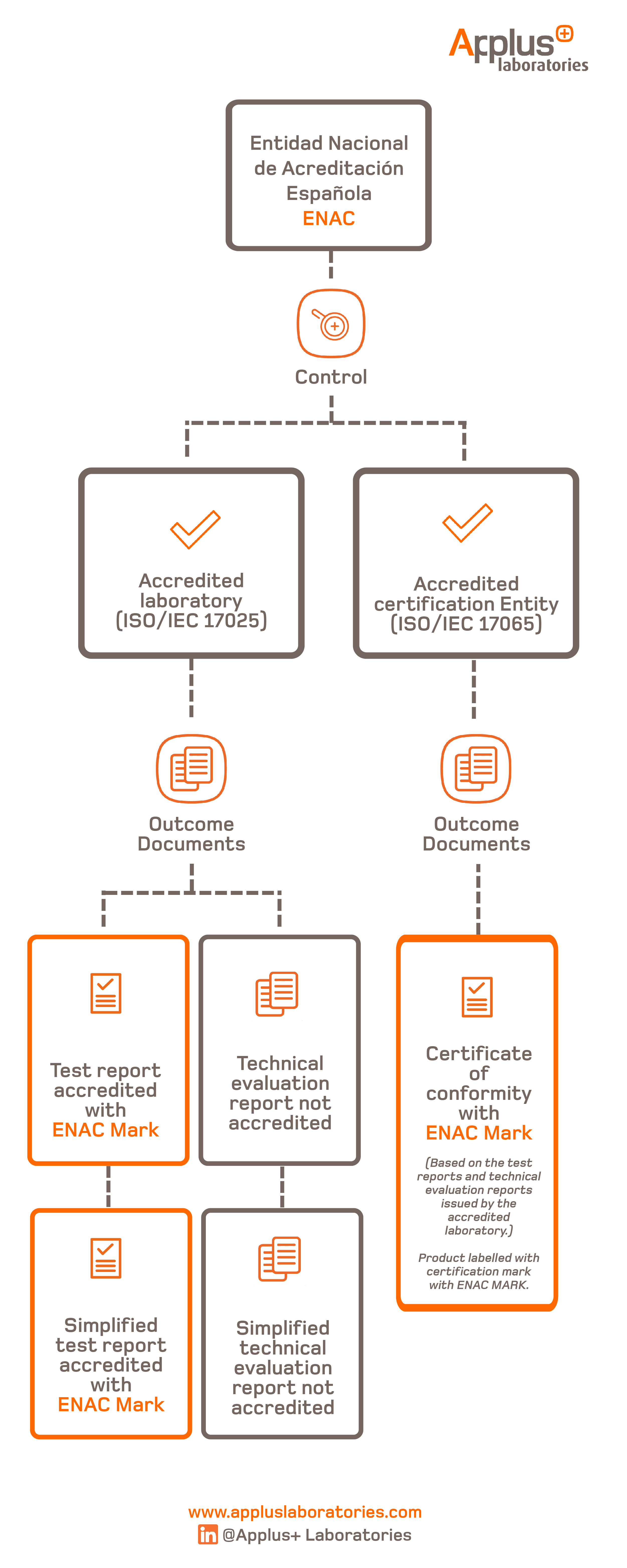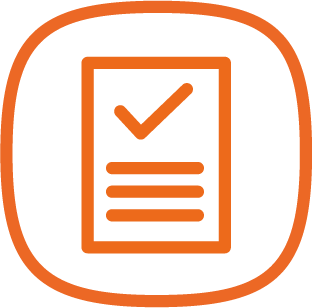Product Certification: The Basics of Accreditations, Certificates and Test Reports
There are international and national standards that establish the requirements that physical security products (like bulgrary- or fire-resitant doors) must meet. Though these are the products we exemplify in this article, much of what you will read can be applied to other product types too.
In Spain, ENAC (Entidad Nacional de Acreditación Española) is the organization in charge of accrediting entitities like laboratories and certification bodies. Through this process of accreditation, it ensures the laboratories' technical competence to carry out the tests in accordance with the accredited standards in its scope. As for certification bodies, it ensures that these have the technical competence to certify that the products comply with the requirements established in the standards. The physical end product of these accreditation processes is the relevant documentation ENAC issues as evidence of this competence.
However, when we are faced with one of these documents, doubts easily arise as to what information we are being given, who has verified this information and what validity it has.
The purpose of this article is to clarify these doubts and to go over the basic concepts of the process of testing, technical evaluation and product certification.
.2022-06-17-11-41-30.png)
What does an Accredited Laboratory do?
Security product testing laboratories receive samples and characterize their levels of security in accordance with established test standards. If the laboratory is accredited by ENAC, we know it has demonstrated its competence, ensuring the correct application of the accredited standards and adequate control of the results.
The test standards are periodically revised by standardization committees, who adapt them to market needs with the latest tools and methods to successfully characterize the physical security products. The elements manufacturers must provide sufficient defence to protect against today's common attacks. That is why the standards indicate the year of issue, to define the version of the standard.
When a new edition of the standard is published, the test laboratory, as it’s accredited, has the obligation to study the updates introduced in the version edition, carry out a comparative documentary study to evaluate the changes and then adapt its processes to the new requirements defined. It should be noted that not all updates involve substantial changes in the test methodology or requirements - sometimes they are editorial changes or clarifications of the existing test methodology. Therefore, when a new version of the standard is published, it is not always necessary to re-test the product, but this should be studied on a case-by-case basis.
In order for the laboratory to characterize a complete product family, two different stages are defined: the first consists of testing the most unfavorable samples of the family. In the second stage, the technical evaluation for the range extension is performed. This means verifying that, given the constructive characteristics of all the models of the same family, they all meet the requirements of the tested samples.
In terms of documentation, a test laboratory can emit the following different document types:
- Test Reports
- Simplified Test Reports
- Technical Evaluation Reports
- Simplified Technical Evaluation Reports
What is the Test Report delivered at the end of the first stage?
Once the first stage is completed, the laboratory issues a Test Report describing the construction detailes of the samples tested, the attacks performed and the results obtained. This report must contain the ENAC mark, provided that the standards are covered by the laboratory's accreditation scope and the test is covered by ENAC accreditation. You can easily double-check whether the laboratory is accredited by consulting the ENAC website. It is also easy to verify that the report is covered by the accreditation - you just need to look for the ENAC mark on the front page. This mark contains the ENAC logo and the laboratory's accreditation number.
A simplified version of this document, called a Simplified Test Report, may also be issued as a result of a test. This document has the minimum information required for the test report, such as the product name, its external dimensions, its weight, the grade obtained, the applicable standards, its date of issue and reference to the fact it is a simplified document.
This Simplified Test Report shows the results obtained from the tests and does not contain confidential information about the construction characteristics of the samples, nor the attacks carried out. That is to say, if the laboratory is accredited to carry out the tests, it will also contain the ENAC mark as long as it is covered by the accreditation. This type of report is provided to the end-user to accredit the degree of security of a product that requires the completion of the Product Certification process according to Spanish Regulations.
What is the Technical Evaluation Report delivered at the end of the second stage?
When the first stage is completed and it has been verified that the tested samples comply with the requirements established by the applicable standards, the second stage begins. At this point, the construction details of all the models that make up the same family are studied. The objective is to evaluate, from the identification of the safety points characterized during the previous tests, the possibility of modifying materials, thicknesses, dimensions and characteristics as long as they increase or equal the safety of the product as a whole.
Once the second stage has been completed, the laboratory issues a Technical Evaluation Report, where all the calculations and validations of the modifications proposed by the applicant are included. This is done to extend the results of the tested samples to the whole product family, with respect to the requirements established by the applicable standards. This document does not have an ENAC mark, since it is not a test report but an evaluation report where the modifications of the different models of the family are evaluated. This report does not describe a test procedure, therefore, it can never have an ENAC mark. However, in case a certification is applied to the product type, the certification body can use it as part of its evaluation based on the technical competence of the laboratory that performs it.
In this case, there is also a simplified format where the minimum essential information defined in the Technical Evaluation Report is indicated. These are things like the names of all the products that make up the family, external dimensions, weights or grades obtained. The data also includes the reference standards that apply and with which the most unfavorable samples were tested. Importantly too, the date of issue of the document. A Simplified Technical Evaluation Report does not have the ENAC mark either, for the same reasons explained above.
How do accredited Test Reports and Technical Evaluation Reports differ from accredited Certificates?
The accredited Certificate is a document that does have the ENAC mark since it is covered by the corresponding accreditation for certification bodies. This document justifies that the manufacture of security products is controlled by an accredited body and not just by the manufacturer, i.e. that the production follows quality standards and is manufactured with the same constructive characteristics as the samples evaluated in the testing laboratory.
It is essential to correctly identify the document that guarantees the safety of any product to know what it is indicating, so as not to confuse a certificate with a Test Report or a Technical Evaluation Report.


.2022-06-16-17-23-47.png)